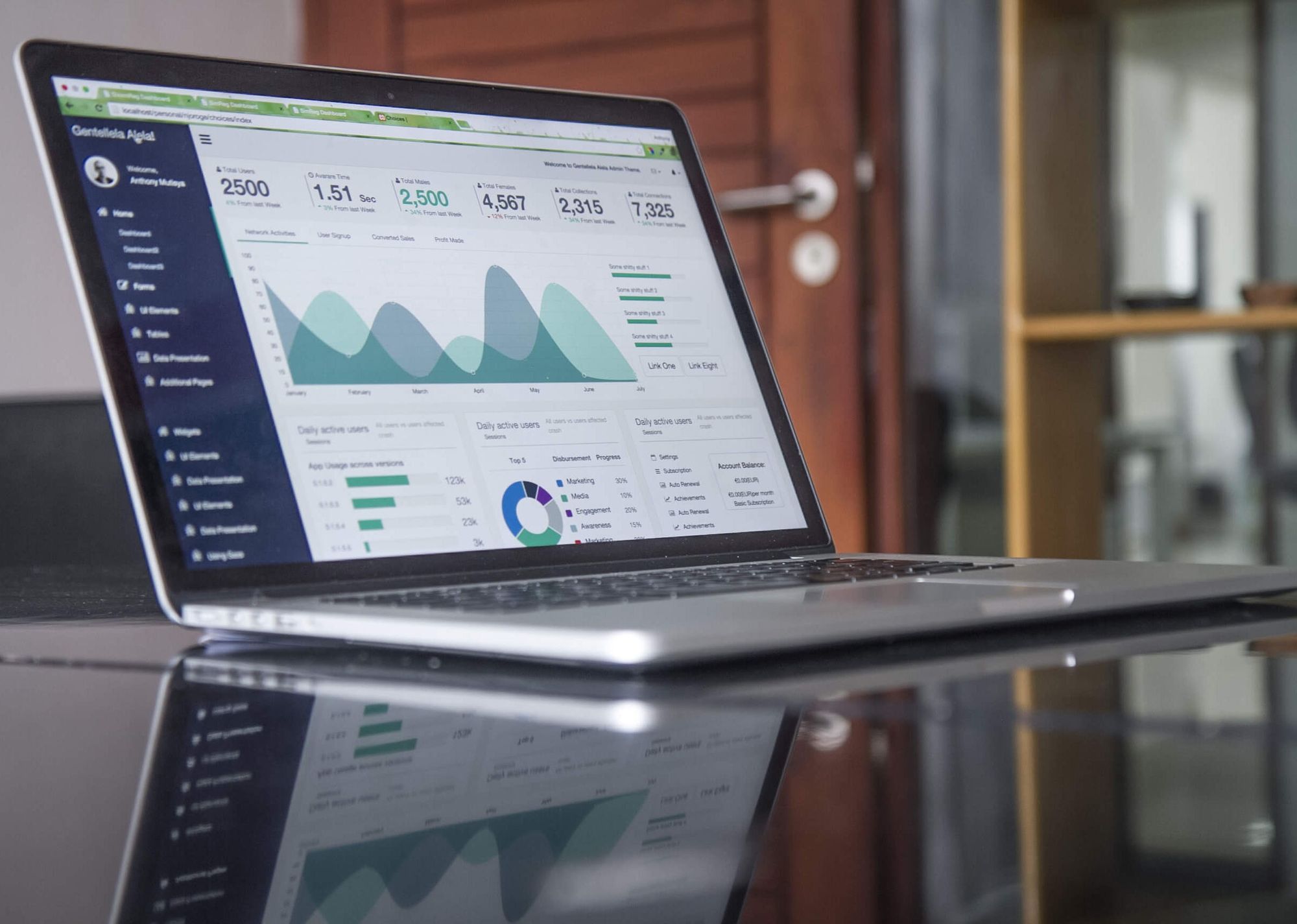In today's workplace, data is fundamental to your business's success. It creates visibility into operational efficiency and supports strategic decision making. It also helps streamline administrative costs and improve revenue.
But this is only true if your data is high quality. Low-quality data, in fact, costs businesses an average US$12.9 million (£10.5 million) every year.
In this blog, we’ll explore why you should build a data dashboard to better monitor your operational efficiency.
What is a data quality dashboard?
A data quality dashboard tracks, analyses and measures a variety of aggregate datasets over time. Dashboards like this let you keep tabs on things like departmental effectiveness and process efficiency. What's more, they offer a high-level overview of your business's long-term performance.
What’s the difference between a dashboard and a scorecard?
Data quality dashboards and scorecards are often confused with one another. And understandably so. For example, they both analyze a variety of key performance metrics. They also both inform strategic direction.
But dashboards and scorecards are quite different. Scorecards provide static snapshots that compare strategic business goals against tangible results. They act as a performance management tool, helping teams identify what worked, and what didn't, when reflecting on data initiatives.
Dashboards, however, offer “boots on the ground” teams a window into data health. This helps them identify processes that need improving. And its helps them track data health continuously and in real time.
But why is this so important?
Why real-time data is so critical
Real-time data (or near real-time) leads to accurate decision making. Teams must know how to react quickly to challenges. And leadership teams need to find ways to inform the decisions that impact future outcomes.
Creating a real-time dashboard will help you:
- Impact operational efficiency, business cost reduction, and bottom-line growth.
- Create faster data error discovery and remediation.
- Enable "at a glance" reporting that ensures projects remain on track.
- Contribute to employee engagement, accountability, and even team retention rates.
With so much data moving through your pipelines, real-time insights can be your greatest ally. Teams can use these insights to develop scalable, long-term and automated workflows. They can also use them to engage in open collaboration and deliver stronger solutions (and stronger narratives) to key stakeholders.
4 steps to take before you build a data quality dashboard
The primary purpose of a data quality dashboard is to track data health continuously and in real time. You want to identify patterns in your business data that will inform future process improvements.
But first, there are some crucial steps you need to take. Here are four things you need to get in order before you can build a data quality dashboard.
1. Ensure you have clear data definitions and rules
For your dashboard to be successful, you need to ensure that the data you feed it is clean, clear, and as accurate as possible. So first, you should define rules to help validate the data during the cleansing process.
Data quality rules, or data validation rules, define the prerequisites your data input should meet. They will specify values, patterns, and the length of the data you need to enter into the data fields. Typical data quality rules include:
- Data type. This ensures the data is the right kind, for instance, text or numbers.
- Data range. This specifies the values the data must fall inside, and rejects those outside it.
- Consistent expressions. This stipulates that the data makes sense when viewed together. An example of this would be when a worker’s start date must be before their leaving date.
- Data format. This ensures that the data entered into the field meets the required format, such as MM/DD/YY for US date entries.
- No null values. This requires that the mandatory fields aren’t empty, and will reject the data submission if not filled out.
With your data quality rules in place, you can then measure the quality of your data according to the following dimensions:
- Completeness: Is all the necessary data present?
- Accuracy: How accurately does your data reflect the tangible outcomes you're pursuing?
- Consistency: Are your different databases consistent with one another?
- Integrity: Does your data remain the same regardless of whether it moves through multiple systems?
- Validity: Does your data conform to the parameters you’ve set for your business rules?
- Timeliness: Is your data accurate and up to date?
- Auditability: Can you track how you’re using the data, as well as any changes to it?
- Uniqueness: Is the data the most relevant version? And, does it override older, irrelevant versions to remove instances of duplicate data?
To read more about these data quality metrics, read our blog: 8 dimensions of data quality.
2. Ensure you have a process in place to keep systems up to date
The accuracy of your dashboard relies upon the accuracy of the many datasets that feed it. It's vital, then, to make sure your data is up to date. There are two main ways you can do this:
- Push real-time data. Push datasets allow you to implement real-time updates to your dashboards efficiently, and more cost effectively than pull datasets. You can do this using a dedicated API.
- Scheduling. If your services don’t rely on real-time data, this is a good alternative. This publishes updates to your datasets at fixed intervals at your chosen frequency.

3. Ensure you have all the necessary automation in place
You should have several automated features that will feed into your data quality dashboard to provide an actionable view of the data.
- Automated reports enable you to monitor the long-term health of your operations.
- Automated analytics collect and analyze datasets to make useful business decisions.
- Automated visualization formats the data into graphs and charts so stakeholders can more easily understand its import.
- Automated Business Intelligence transforms the data into actionable strategies that will serve your business goals.
4. Ensure you’ve got good error handling
When you build your dashboard, make sure you have bad data identification top of mind, and good error handling in place. This will help you improve the trustworthiness of your data. And it'll help you solve data challenges before they become business problems.
The benefits of data quality dashboards
There are many benefits that come with a data quality dashboard. Not only do they promote trust in the core metrics that drive growth, but they also create visibility into business performance over time.
Here are a few more benefits of data quality dashboards.
1. Dashboards prevent catastrophic data errors
Real-time dashboards allow teams to work proactively and resolve data inconsistencies at the source. This ensures you can solve “big ticket” errors before they impact pipeline performance.
2. They support automation initiatives
Dashboards provide visibility into inefficient and outdated workflow processes. This provides teams with automation opportunities that contribute to efficiency.
3. Dashboards save time and resources
Without a data quality dashboard, your teams could lose time and money. They might spend hours trying to run individual reports, for example. They might also find themselves bottlenecked by specific departments, or unable to access what they need due to data formatting issues.
4. Dashboards create a culture of accountability
Data quality dashboards create accountability. Managers can track specific key performance metrics for individual projects, for instance. They can then report on metrics and ensure teams are delivering work up to standard.
5. Dashboards contribute to leadership buy-in
Dashboards make it easy to produce in-depth reports that you can regularly present to a board of investors. This promotes investor trust and supports greater leadership buy-in.
6. They create smarter business forecasting
Data quality dashboards bring to light a multitude of data sets. This often includes things like customer buying cycles, product life cycles, and team efficiency statistics.
With so much historical data available to you, it becomes easier to forecast for the future. It also helps you identify potential market downturns or consumer demand fluctuations.
7. Dashboards help you get noticed
The measurable success and business impact you can make using data quality dashboards stands out to management. And that helps you carve out a more influential voice in your organization.
Track, maintain, and optimize your data quality
With a data quality dashboard, you can increase your visibility over your data quality, helping you make well-informed decisions across the organization. And, with an accurate view of historical data, you can create better business strategies for the future, and contribute to your business’s growth.
To find out how CloverDX can help you prepare your data and get the most value from your data quality dashboard, contact us today.









